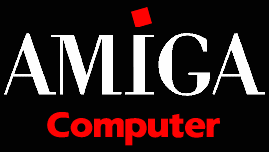










The hardware of the

Computer
When it was first introduced, in 1984, the Amiga was nearly a decade
ahead of its time. Although the rest of the industry has largely succeeded
in matching or even exceeding the Amiga's hardware advantages, many
will argue that the Amiga continues to hold true to a goal of elegance
in computing even as the rest of the industry has become mired in
a swamp of inefficiencies that require more and more hardware to make
it work at all.
Multiprocessing Hardware
The Amiga was introduced with a 7.16MHz Motorola 68000 CPU. Working in tandem with the main CPU are several other chips (CPUs almost in their own right, and equipped with cute names, too): Agnus, Denise, Paula, ...
These peripheral CPUs (PPUs?) handled various input/output (I/O) tasks: memory access, sound generation, floppy disk I/O, display generation, special graphics tricks, etc.
These peripheral chips allowed the main CPU to concentrate on other tasks (such as user interaction, decoding sound, etc.) without any slowdown due to graphic objects bouncing around on the screen, or data coming off the floppy disks, or thundering stereo sound pouring out of the speakers.
Yes, it's true: the Amiga has always been a kind of multiprocessing computer!
Flexible Memory Architecture
The Amiga was introduced with 512K of ``Chip'' RAM and up to 8MB RAM. Chip RAM is the memory addressable by the display chips (for those of you familiar with the Intel machines, this is the equivalent of the Monochrome or Color display memory area at B8000 or B0000, and more recently the dedicated memory on graphics cards.)
By 1990, the Amiga's ``Chip'' RAM address space had grown to 2MB and it could have up to 256MB of memory on the motherboard.
The Amiga's Chip RAM is not for graphics displays only, however. ``Chip'' RAM is named so because the Amiga's peripheral CPUs (chips) all access that region of memory. But unlike with other computers you can, in fact, run programs in Chip RAM if your main memory is exhausted. The operating system manages such a case all on its own, of course.
When the main CPU and the peripheral chips all want access to ``Chip'' RAM, a bit of a ``traffic jam'' occurs. When there is no contest for that special memory area, however, both the main CPU and the peripheral CPUs can access their respective memory independently of each other and without hurting each other's performance. This architecture gave the Amiga the ability to play 4096 color full-screen animations along with four-channel stereo sound in 1985, over ten years before any other personal computer had any hope of getting anywhere near that kind of performance.
Video Compatible
The Amiga's peripheral CPUs are able to generate video compatible signals, meaning that their output is compatible with televisions and VCRs. Every Amiga can generate NTSC and PAL signals at will.
A company named NewTek created for the Amiga the Video Toaster, a device that plugs into the Amiga's video slot and provides it with the ability to generate live video effects, such as flipping, bending and twisting images in real time, rolling a video signal up or down as if it was on a roll of paper, etc. The Video Toaster put the Amiga into many television studios and made possible the special effects on shows such as Startrek, SeaQuest, and Babylon 5.
To this day, the Amiga is unequaled in the video field.
Future Hardware
Even equipped with today's comparatively slow 680x0 series CPUs (68000, 68020, 68030, 68040, and 68060) the Amiga's highly efficient operating system is able to hide many of the limitations of the aging hardware and provide Amiga users with relatively modern computers that are often as responsive as entry-level Pentiums.
The Amiga is now poised to enter the age of the Motorola PowerPC RISC CPU, providing Amiga users with computing power that is one or two orders of magnitude above their current machines, and exceeds the power of high-end Pentium computers, especially in the realm of floating-point operations. Combined with the elegance and efficiency of the Amiga's high-performance multimedia operating system, this promises to be a breath-taking endeavour...
The alteration of any part of this content by manual or automated means (adding, removing, or in any other way altering links, text, or images) constitutes misrepresentation of our content in violation of United States copyright law. For more details, please see our content ownership details page for elaboration.



